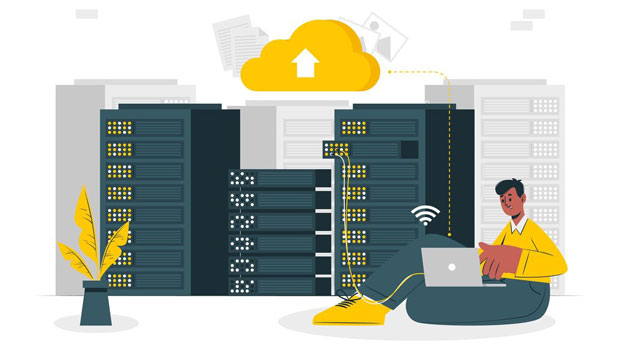In today's digital world, privacy and security are becoming increasingly important. As internet activity grows, the demand for proxy servers has surged, particularly sock s5 proxies, which are favored for their speed and flexibility. SOCKS5 proxies, unlike traditional HTTP or HTTPS proxies, route all internet traffic through a server, making them a robust choice for users seeking anonymity. Choosing a stable socks5 proxy server is vital for anyone concerned about secure browsing, seamless performance, and reliable connectivity. This guide will provide a comprehensive approach to selecting the best socks5 proxy server by evaluating key factors such as stability, security, speed, compatibility, and cost-effectiveness. Understanding SOCKS5 Proxy ServersSOCKS5 (Socket Secure version 5) is a protocol used for internet communication that facilitates secure and anonymous connections. Unlike its predecessors, SOCKS4 and SOCKS4a, SOCKS5 supports both UDP and TCP protocols, making it suitable for a wider variety of applications, such as streaming, gaming, and secure browsing. A SOCKS5 proxy server works by acting as an intermediary between your device and the internet, routing all your traffic through its own server.SOCKS5 proxies do not modify or inspect your data, which means they do not provide built-in encryption. However, their ability to route traffic through multiple servers makes them ideal for users looking to mask their IP address and maintain privacy.Key Factors to Consider When Choosing a SOCKS5 Proxy ServerWhen selecting a SOCKS5 proxy server, several factors should be considered to ensure both security and performance. Below are the most critical aspects to evaluate:1. Stability and ReliabilityThe most essential quality of a proxy server is stability. A stable connection ensures that your internet browsing or any other activity you are engaging in does not suffer from interruptions. Frequent disconnections or slow response times can be frustrating, especially when you rely on the proxy for sensitive tasks like online banking or streaming.To test the stability of a SOCKS5 proxy server, consider its uptime record, user reviews, and whether the provider offers a reliable support system in case of issues. Always choose a provider with a proven track record of uptime and a customer service team that can quickly address any problems.2. Security and EncryptionWhile SOCKS5 itself does not provide encryption, the security of the proxy server depends on the protocols and additional security measures the provider offers. It's crucial to ensure that the proxy server provider follows best practices in securing your data.Some SOCKS5 providers offer additional security layers, such as SSL/TLS encryption, which can secure your data even when browsing unsecured websites. Additionally, look for providers that have a no-logs policy, meaning they do not store any records of your online activity.3. Speed and PerformanceThe speed of a SOCKS5 proxy server is another key factor in ensuring a smooth browsing experience. Slow proxies can hinder your internet experience, especially when performing data-heavy tasks like streaming videos, downloading large files, or playing online games.To gauge the performance of a SOCKS5 proxy, check its bandwidth limits, latency, and server location options. Ideally, the proxy should offer high-speed servers with low latency, which are located close to your physical location. This will reduce any lag or delays that can affect your online experience.4. Geographic Server LocationsOne of the advantages of using a SOCKS5 proxy is the ability to access content from different regions by selecting a server located in a specific country. For example, you may want to access content from the United States or bypass geographical restrictions imposed by certain websites.Choose a provider that offers multiple server locations worldwide. This will give you the flexibility to select a server in the desired region, helping you to enjoy seamless access to restricted content.5. Compatibility with ApplicationsBefore purchasing a SOCKS5 proxy, ensure it is compatible with the applications you intend to use. SOCKS5 proxies are versatile, but some apps may require special configurations or additional tools to ensure proper functionality.Check whether the proxy server is compatible with popular applications like web browsers (Chrome, Firefox), torrent clients, streaming services, or gaming platforms. Compatibility is particularly important for users looking to use SOCKS5 proxies for secure file-sharing or gaming activities.6. Cost and Payment OptionsPrice is always a consideration when choosing any online service, and SOCKS5 proxies are no different. Providers may offer different pricing models, such as monthly, yearly, or pay-per-use options. While choosing the cheapest option might be tempting, it’s important to balance cost with quality and performance.Evaluate the pricing structure of different providers, and consider factors such as data limits, server options, and customer support when making your decision. Also, ensure the provider offers a refund policy or a free trial period, allowing you to test the service before committing long-term.7. Customer Support and ServiceReliable customer support is essential, particularly if you encounter issues while using your SOCKS5 proxy server. A responsive support team can help resolve connectivity issues, troubleshoot performance problems, and answer any technical queries.Check whether the proxy provider offers 24/7 customer support, and what channels they use to communicate (e.g., email, live chat, phone). Fast and effective customer service is critical to ensuring that any disruptions in service are resolved quickly.8. Additional FeaturesSome SOCKS5 proxy providers offer additional features that can enhance the overall experience. These features may include IP rotation, which automatically changes your IP address at regular intervals, or advanced authentication methods to protect against unauthorized access.Look for additional features that meet your specific needs, such as specialized support for particular applications or tools for managing multiple proxy connections. These features can add value and improve the overall functionality of the SOCKS5 proxy service.Choosing a stable SOCKS5 proxy server requires careful consideration of several factors, including stability, security, speed, compatibility, cost, and customer support. By focusing on these aspects, you can ensure that you select a high-quality proxy server that provides a secure, fast, and reliable internet experience. Whether you're looking to maintain privacy, access restricted content, or perform secure online activities, a well-chosen SOCKS5 proxy server can make a significant difference.
Oct 12, 2025



































































